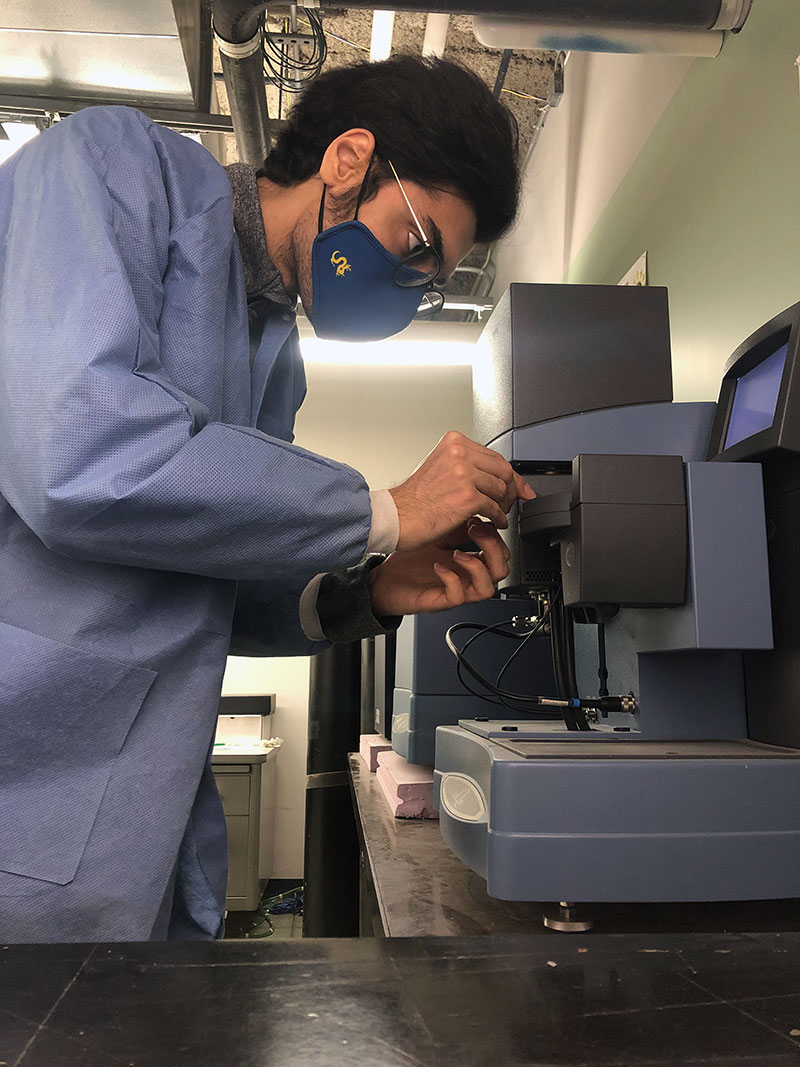
Balapour performs research in the lab.
Mohammad Balapour, a PhD candidate studying civil engineering with a focus on materials, has been announced as the winner of a Best Paper Award from the American Ceramic Society for his work on a novel framework for creating lightweight aggregate (LWA) from coal ash.
The paper, “Thermochemical principles of the production of lightweight aggregates from waste coal bottom ash,” explores the problem that the waste coal combustion ash — a waste product of coal-fired power plants — has varying chemical properties, but that when they are treated properly, they can be used to develop strong, durable, lightweight construction material.
“LWA is created from coal ash using a process called sintering, which is essentially mixing it with a solution and heating it,” Balapour explains. “The process also creates different gasses, which contribute to the porous structure of LWA. But the process is often down to trial and error because of the variances in chemical composition of waste coal combustion ash. Using our framework, you can know what’s in your coal ash and know exactly what kind of solution you need to mix it with to get the results you need.”
The study, which was funded by the National Science Foundation, was first published in the Journal of the American Ceramic Society last September. Balapour was joined in the research by co-authors Rathin Rao, a Drexel Engineering MS graduate; Grace Hsuan, PhD, professor of civil, architectural and environmental engineering (CAEE); Sabrina Spatari, PhD, associate professor of CAEE; Edward J Garboczi, PhD, a fellow in the National Institute of Standard and Technology; and Balapour’s advisor, Amir Yaghoob Farnam, PhD, assistant professor of CAEE.
“There are mountains of waste coal ash sitting in landfills right now. If we can instead use that waste to create building materials, we’re really reducing the impact it has on the planet.”
Mohammad Balapour
“I have been working with Mohammad for about four years, and I can see how he is passionate about his research,” Farnam says. “In announcing Mohammad’s paper as the award winner, the journal’s associate editor said ‘After 30 years of editing, few papers I see have it all. For 2020, yours is it! Congratulations on a well thought out, executed, presented, discussed, and concluded project - with socio-economic implications.’ I’m very proud of Mohammad for having received such well-deserved praise.”
Balapour says that he’s grateful to see his work recognized because of the environmental benefit that comes from creating LWA from what is typically a waste product.
“There are mountains of waste coal ash sitting in landfills right now,” he explained. “We were talking to a power plant owner who said that there are restrictions on what they can dump because the amount is so overwhelming. If we can instead use that waste to create building materials, we’re really reducing the impact it has on the planet. And to have that kind of work acknowledged and celebrated is really important.”